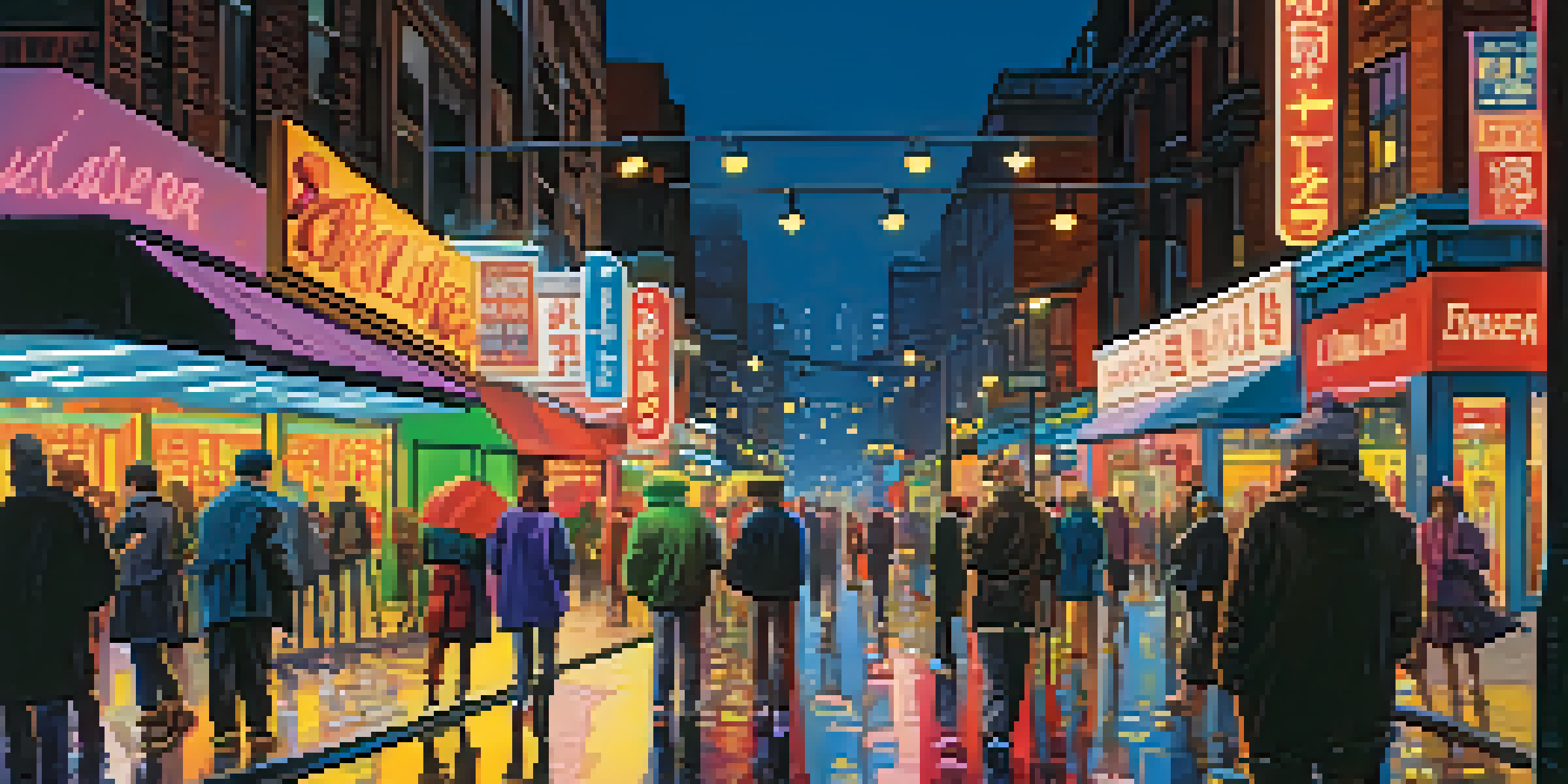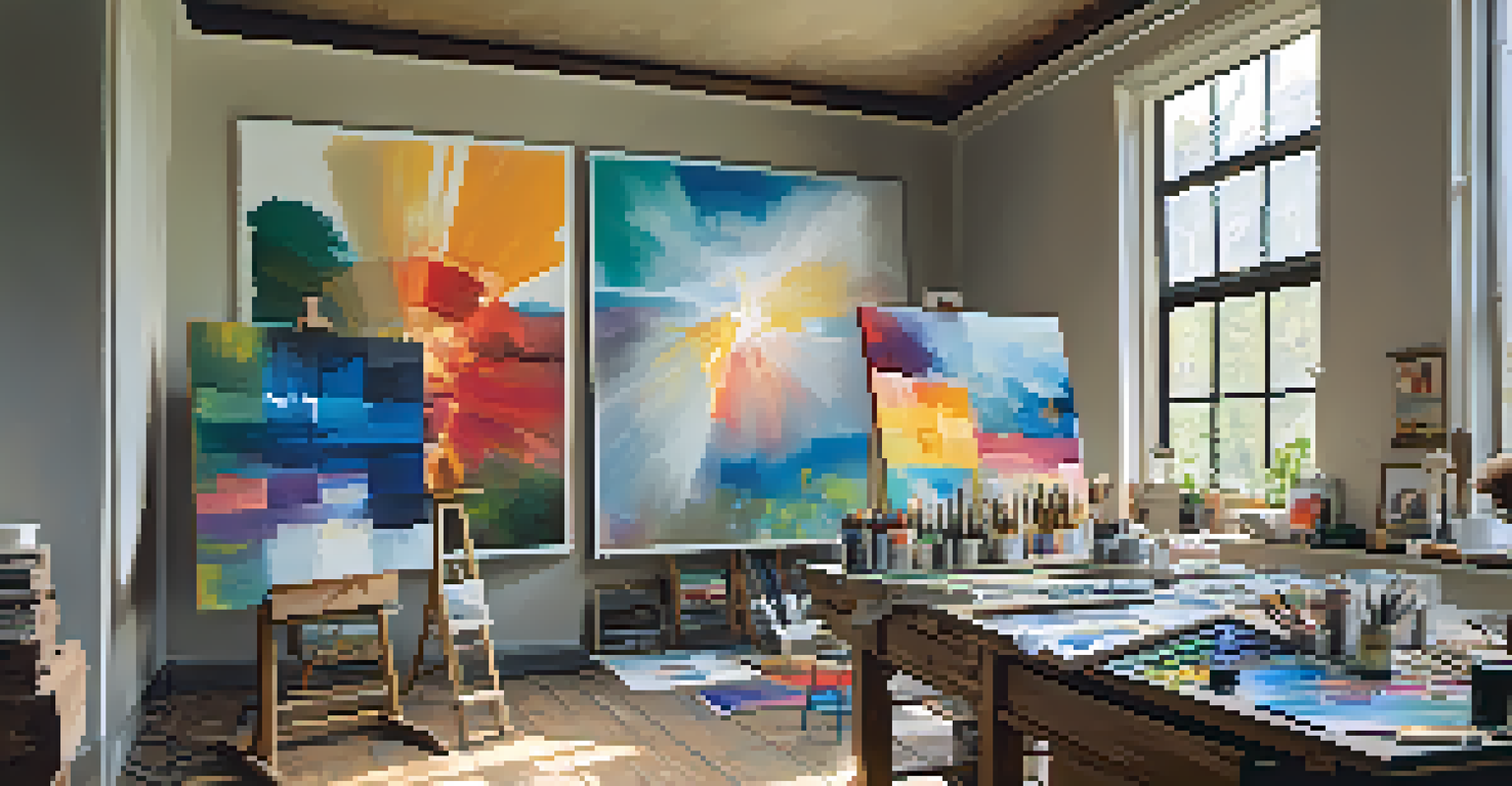Exploring the Basics of Cinematic Color Grading Techniques

What is Color Grading and Why is it Important?
Color grading is the process of enhancing and altering the color of your footage to convey mood and emotion. Think of it as the final polish that makes your film visually appealing and cohesive. Just like a painter uses different shades to evoke feelings, filmmakers use color grading to guide the audience's emotions throughout the story.
Color is the keyboard, the eyes are the harmonies, the soul is the piano with many strings.
An effective color grade can transform a mundane scene into something captivating. It helps create a visual narrative that can influence how viewers perceive characters and events. For instance, a warm color palette might evoke nostalgia, while cooler tones may create a sense of unease.
In essence, color grading is crucial for storytelling in film. By manipulating colors, filmmakers can highlight themes, suggest time periods, and even signify character development, making it an essential tool in the cinematic toolbox.
Understanding the Color Wheel and Its Role
The color wheel is a foundational tool in color grading, showcasing how colors relate to one another. It’s divided into primary colors (red, blue, yellow), secondary colors (green, orange, purple), and tertiary colors. Understanding the color wheel allows filmmakers to create harmonious color schemes that enhance their visual storytelling.

For example, complementary colors—those opposite each other on the wheel—can create striking contrasts that draw viewers' attention. Using these colors strategically can emphasize critical elements in a scene, such as a character's emotions or a pivotal moment in the narrative.
The Importance of Color Grading
Color grading enhances footage to convey mood and emotion, playing a vital role in storytelling.
By mastering the color wheel, you can make informed choices about your grading process. This knowledge enables you to create visuals that not only look good but also serve a purpose in your storytelling.
The Basics of Color Correction vs. Color Grading
While often used interchangeably, color correction and color grading serve different purposes in film production. Color correction is the initial step where you fix any exposure or color issues, ensuring your footage looks natural. Think of it as the foundation of your house—without a solid base, everything else will crumble.
The colors we use in a film are not merely decorative; they are part of the storytelling.
On the other hand, color grading is about enhancing the aesthetic and emotional qualities of your footage. It’s like decorating your house; you want to create a specific atmosphere that resonates with your viewers. This step often involves applying creative looks and styles that define the film's tone.
In summary, color correction sets the stage for your film, while color grading adds the finishing touches. Both are essential for achieving a professional look that captivates audiences and enhances storytelling.
Essential Tools for Color Grading
To dive into color grading, you'll need the right tools. Software like Adobe Premiere Pro, DaVinci Resolve, and Final Cut Pro X are popular choices among filmmakers. Each of these programs offers unique features that cater to both beginners and professionals, making them accessible for various skill levels.
For instance, DaVinci Resolve is renowned for its advanced color grading capabilities, allowing you to manipulate colors with precision. On the other hand, Adobe Premiere Pro provides a more integrated approach, combining editing and color grading in a user-friendly interface.
Tools for Effective Color Grading
Using software like DaVinci Resolve and Adobe Premiere Pro allows filmmakers to experiment with color palettes and styles.
Having the right tools can significantly impact your color grading process. With these programs, you can experiment with different looks and styles, helping you find the perfect color palette for your film.
Common Color Grading Techniques to Explore
There are several color grading techniques that filmmakers can use to achieve their desired look. One popular method is the use of LUTs (Look-Up Tables), which are pre-defined color grading presets that can quickly transform your footage. Think of LUTs as filters for your film—similar to those found on social media platforms, but designed for professional use.
Another technique is the use of color wheels, which allow you to adjust the shadows, midtones, and highlights of your footage independently. This precision helps you create a balanced and dynamic color palette that can enhance your film's mood.
Additionally, techniques like split toning and color isolation can draw attention to specific elements in your scene, guiding the viewer's eye where you want it to go. By experimenting with these techniques, you can craft a unique visual style that complements your story.
The Emotional Impact of Color in Film
Color is a powerful storytelling tool that can evoke emotions and set the tone for your film. For instance, vibrant reds and yellows can create a sense of excitement or warmth, while blues and greens often convey calm or sadness. Understanding these emotional associations can help you make informed decisions about your color grading choices.
Consider how films like 'The Grand Budapest Hotel' use bold colors to create a whimsical atmosphere, contrasting with the more muted tones of a drama like 'Schindler's List,' which evokes a somber mood. Each choice influences how the audience feels about the characters and the story.
Emotional Impact of Color Choices
Colors evoke emotions and set tones in films, influencing how audiences perceive characters and narratives.
By tapping into the emotional impact of color, filmmakers can enhance their storytelling and create a more immersive experience for viewers. It’s a subtle yet significant aspect of filmmaking that can leave a lasting impression.
Tips for Beginners: Getting Started with Color Grading
If you're new to color grading, starting can feel overwhelming, but it doesn't have to be! Begin by familiarizing yourself with the tools and software available, and don’t hesitate to watch tutorials to learn the basics. There’s a wealth of resources online that can guide you through the initial steps, making the learning process enjoyable.
Practice is key! Take some of your footage—whether it's from a short film or a simple video—and experiment with different color grading techniques. This hands-on approach will help you gain confidence and develop your unique style over time.

Lastly, don’t be afraid to seek feedback from fellow filmmakers or friends. Constructive criticism can provide valuable insights and help you refine your skills. Remember, color grading is an art, and like any art form, it takes time to master.